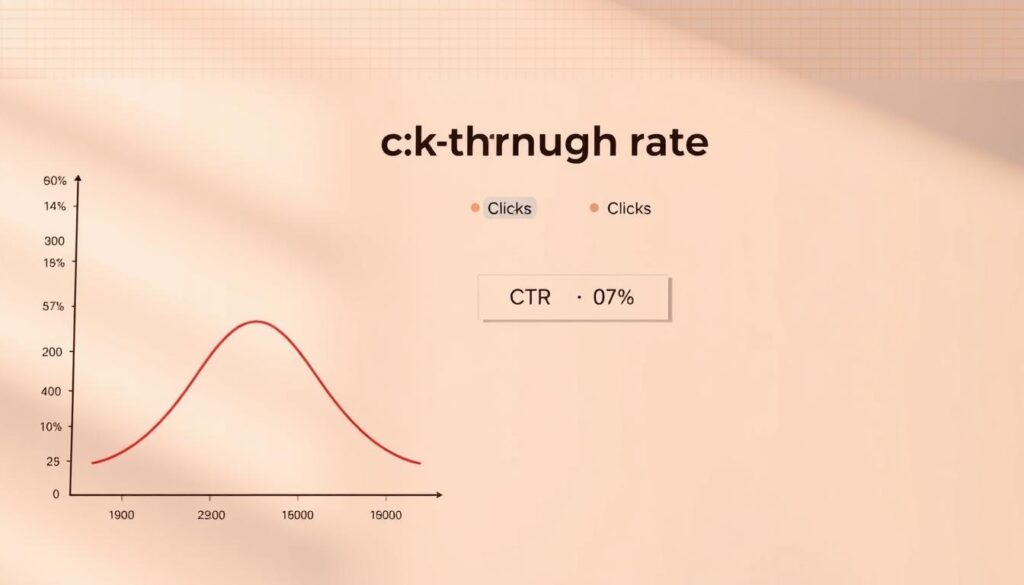Are your Facebook ads working as well as you hope? With so many businesses using Facebook ads, it’s tough to stand out. To do better, you need to track and measure your ads’ performance well.
Facebook Ads metrics are important numbers that show how well your ads are doing. By keeping an eye on these key performance indicators, you can learn a lot about your ads. This helps you make smart choices to improve your campaigns.
Knowing the right metrics is key to a successful campaign. In this article, we’ll look at the top metrics for facebook campaign success. These will help you boost your campaign analytics.
Introduction to Facebook Ad Metrics

Understanding Facebook Ad metrics is key for advertisers to get the most from their campaigns. These metrics help track how ads connect with the audience, measure return on investment, and guide decisions to improve ad strategies.
Why Metrics Matter for Campaign Success
Metrics are vital for any successful Facebook ad campaign. They show how well ads perform, helping advertisers to analyze success and spot areas for betterment. By watching these metrics closely, advertisers can tweak their plans to better connect with their audience and achieve better results.
Not knowing these metrics can lead to wasting money on ads that don’t work. So, it’s critical to understand how metrics help measure campaign success and guide data-driven choices.
Overview of Key Performance Indicators
Key Performance Indicators (KPIs) are measurable signs of a Facebook ad campaign’s success. Common KPIs include click-through rates, conversion rates, and return on ad spend. These help advertisers see how their ads perform in terms of social media metrics.
By keeping an eye on these KPIs, advertisers can fully grasp their campaign’s performance. This knowledge helps them make smart choices to improve their ad strategies for better results.
- Click-through rates (CTR)
- Conversion rates
- Return on ad spend (ROAS)
By focusing on these key metrics and KPIs, advertisers can boost their chances of facebook campaign success. This leads to meaningful results from their ad efforts.
Metric 1: Click-Through Rate (CTR)

To get the most out of Facebook ads, knowing about Click-Through Rate (CTR) is key. CTR shows how well ads engage users. It’s a core part of campaign analytics.
What is CTR and Why It Matters
CTR is the number of clicks on an ad divided by its impressions. It shows how well your ad connects with people. A high CTR means your ad is working well. A low CTR means it might need some tweaks.
“A well-crafted ad with a clear message and compelling visuals can significantly boost your CTR, leading to better campaign outcomes.” – A marketing expert. This shows why it’s not just about knowing CTR. It’s also about making your ad better.
How to Calculate CTR
Calculating CTR is easy: just divide clicks by impressions and multiply by 100. For example, 100 clicks out of 1,000 impressions means a 10% CTR. This metric is key for checking how well your ad is doing.
Tips to Improve Your CTR
To boost CTR, try these:
- Make your ad copy and visuals more appealing to your audience.
- Use strong calls-to-action (CTAs) to get people to click.
- Target the right people with specific demographic and interest-based targeting.
- Test different ad versions to find the best ones.
By using these tips, you can make your ad’s CTR better. This leads to a more successful campaign that meets your goals and boosts ROI.
Getting better at CTR is just the start for Facebook ad success. By focusing on this key metric, you can improve your campaign analytics and optimization.
Metric 2: Conversion Rate

To truly analyze the success of your Facebook ad campaigns, you need to look beyond basic metrics. Focus on conversion rate. The conversion rate shows how well your ads perform in achieving your goals.
Understanding Conversion Rate
The conversion rate is the percentage of users who complete a desired action after clicking on your ad. This action could be making a purchase, signing up for a newsletter, or downloading an app. Tracking conversions is critical for understanding your ad campaign’s effectiveness and making informed decisions.
For example, if your ad campaign aims to drive sales, a high conversion rate means your ad is effective. On the other hand, a low conversion rate might mean your ad needs improvement. This could be in targeting, creative assets, or the landing page experience.
Different Types of Conversions
Conversions can vary based on your campaign objectives. Common types include:
- Sales: When a user makes a purchase after clicking on your ad.
- Lead Generation: When a user fills out a form or signs up for a service.
- App Installs: When a user installs your app after clicking on your ad.
- Event Sign-ups: When a user signs up for an event or webinar.
Understanding these different types of conversions helps you tailor your ad campaigns to specific goals. This way, you can measure their success accurately.
Strategies to Increase Conversion Rate
Improving your conversion rate requires optimizing your ad creatives, targeting the right audience, and ensuring a seamless user experience on your landing page. Here are some strategies to consider:
- Optimize Ad Creatives: Ensure your ad visuals and copy are compelling and relevant to your target audience.
- Targeting: Use Facebook’s targeting options to reach users who are most likely to convert.
- Landing Page Experience: Make sure your landing page is user-friendly, fast, and consistent with your ad’s message.
- A/B Testing: Continuously test different elements of your ad campaigns to identify what works best.
By implementing these strategies, you can enhance your conversion rates. This will improve the overall ROI of your Facebook ad campaigns.
Metric 3: Cost Per Click (CPC)
Understanding the Cost Per Click (CPC) is key to getting the most out of Facebook ads. CPC is the cost for each ad click. It shows how well an ad campaign is doing financially.
Analyzing Your CPC
To get the most out of your CPC, look at it with your campaign goals in mind. Also, consider Click-Through Rate (CTR) and Conversion Rate. A high CPC might mean your ad is competitive, but it could also show your targeting is too narrow or your ad isn’t connecting with your audience.
Keeping an eye on your CPC helps spot trends and make needed changes. It’s important to compare your CPC to industry standards. This shows how your campaigns stack up against your competitors.
Factors Influencing CPC
Several things can change your CPC, including:
- Ad Quality and Relevance: Facebook likes ads that match their audience well. This can lower your CPC if your ads are high-quality.
- Target Audience: How specific and large your target audience is can affect CPC. A very targeted audience might raise CPC because of higher demand.
- Bidding Strategy: Your bidding strategy (like automatic or manual) can greatly change your CPC.
- Competition: If many are competing for the same keywords or audience, CPC can go up.
Reducing Costs Without Sacrificing Quality
To lower CPC without losing ad quality, try these strategies:
- Improve Ad Relevance: Make sure your ad really speaks to your target audience. This can boost performance and lower CPC.
- Optimize Your Landing Page: A smooth and relevant landing page can up your conversion rates. This might lower CPC by improving ad scores.
- Refine Targeting: Find the right balance in your targeting. Too broad or too narrow can affect CPC.
- Use Automated Bidding Strategies: Facebook’s automated bidding can adjust your bids in real-time. This can help lower CPC and meet your goals.
By managing your CPC well, you can boost your ROI and get better results from Facebook ads.
Metric 4: Return on Ad Spend (ROAS)
Return on Ad Spend (ROAS) shows how much money your ads make compared to what you spend. It’s a key way to see if your Facebook ads are worth it.
Defining ROAS
ROAS is found by dividing the money made from ads by how much they cost. For example, if you spend $100 and make $500, your ROAS is 5:1. This means you make five dollars for every dollar you spend.
How to Measure ROAS Effectively
To track ROAS well, you must accurately count conversions. Here’s how:
- Use Facebook Pixel or other tools to track conversions on your ads.
- Make sure your ad campaigns are connected to your sales data.
- Choose a consistent way to measure how your ads affect sales.
By doing these things, you can see how profitable your campaigns are. This helps you make smart choices to maximize ROI.
Best Practices for Maximizing ROAS
To boost your ROAS, follow these tips:
- Optimize Ad Targeting: Make sure your ads reach the right people.
- Improve Ad Creative: Use ads that grab attention and encourage action.
- Monitor and Adjust: Keep an eye on how your ads are doing and tweak them as needed.
Using these strategies can make your ads more effective. This leads to better facebook campaign success. By regularly checking your ROAS, you can see how profitable your campaigns are. This helps you make smart choices to analyze success and improve future ads.
Metric 5: Impressions
To make your ad more visible, understanding impressions is key. Impressions count how many times your ad shows up on Facebook. This helps you see how often people see your ad.
What Impressions Tell You About Engagement
Impressions give clues about your ad’s engagement power. Seeing your ad a lot can help people remember your brand. But, impressions don’t show if people actually interact with your ad.
Key factors influenced by impressions include:
- Brand visibility
- Ad recall
- Potential for engagement
Differentiating Between Impressions and Reach
Impressions and reach are not the same. Reach is how many unique people see your ad. Impressions count every time your ad shows up, even to the same person.
For example: If one person sees your ad three times, it’s one reach and three impressions. Knowing this helps you understand your ad’s success better.
How to Boost Impressions on Your Ads
To get more impressions, try these tips:
- Target a broader audience: Reach more people with your ad.
- Increase your ad budget: More money means more chances for your ad to show up.
- Improve ad relevance: Make sure your ad speaks to your audience.
- Use compelling visuals: Catchy images or videos can draw more views.
Use these strategies and watch your impressions grow. This can make your ad more visible and effective.
Integrating Metrics into Your Strategy
To understand your Facebook ad campaigns’ success, you must integrate metrics into your strategy. It’s important to know how different metrics affect your campaign’s performance. This way, you can make informed decisions to improve your ads.
Setting SMART Goals for Campaigns
Setting Specific, Measurable, Achievable, Relevant, and Time-bound (SMART) goals is key for success. This method helps you:
- Clearly define your campaign goals
- Track your progress with benchmarks
- Create ads that speak to your audience
For example, instead of saying “I want more sales,” aim for “Increase sales by 15% in 3 months with ads for existing customers.” This focused approach helps maximize ROI by targeting specific goals.
Benchmarking Against Industry Standards
Comparing your campaign to industry standards offers valuable insights. It shows how your ads stack up against competitors. This helps spot areas for improvement and ways to stand out.
When benchmarking, consider:
- Average CTR for your industry
- Typical conversion rates
- Average CPC and ROAS
Knowing these benchmarks lets you tweak your ad strategy. This way, you can better compete in your industry and analyze your campaign’s success more effectively.
Tools to Analyze Facebook Campaign Success
To measure your Facebook campaign success, you need the right tools. It’s key to analyze your campaign’s performance. This helps you understand what works and what doesn’t. You can then make smart decisions to improve your ads.
Facebook Ads Manager Overview
Facebook Ads Manager is a powerful tool for managing and analyzing your Facebook ad campaigns. It shows you how well your ads are doing. You can see metrics like click-through rate (CTR), conversion rate, and return on ad spend (ROAS).
With Ads Manager, you can track your ad performance across different campaigns. This makes it easier to find areas to improve. The tool also lets you create custom reports. This way, you can focus on the metrics that are most important to your business.
It also gives you insights into your audience demographics. This helps you refine your targeting strategies.
Third-Party Analytics Tools
While Facebook Ads Manager is great, third-party analytics tools offer more insights. Tools like Hootsuite, Sprout Social, and Google Analytics help you connect your Facebook ad data with other marketing channels. This gives you a broader view of your marketing performance.
These tools have advanced features like cross-channel attribution, custom dashboards, and predictive analytics. Using these features, you can understand your campaign’s performance better. This helps you make more informed decisions.
- Hootsuite: Offers complete social media management and analytics.
- Sprout Social: Provides detailed social media analytics and engagement tools.
- Google Analytics: Enables cross-channel tracking and attribution.
By combining Facebook Ads Manager with third-party analytics tools, you can build a strong analytics stack. This helps you optimize your Facebook campaigns and achieve better results.
The Role of A/B Testing in Metrics
To get the most out of your ads, it’s key to know how A/B testing works. A/B testing, or split testing, compares two ads to see which one does better. It’s a great way to make sure your ads are working well and your money is being spent wisely.
What is A/B Testing?
A/B testing is a simple yet powerful way to test different parts of an ad. You can test things like images, headlines, or buttons. By showing two ads to the same people, you can see which one gets better results.
Key elements to test include:
- Visual content
- Ad copy and messaging
- Targeting options
- Call-to-action (CTA) buttons
How to Use A/B Testing for Better Metrics
To use A/B testing well, first pick what you want to test. It’s important to test one thing at a time. For example, if you’re testing images, keep everything else the same.
Steps to implement A/B testing:
- Define your goal: Know what you want to improve.
- Create variations: Make two ads with the thing you’re testing changed.
- Run the test: Show both ads to the same people at the same time.
- Analyze results: See which ad does better based on your goal.
- Implement changes: Use the better ad and apply what you learned to future ads.
As
“The key to successful A/B testing is to be patient and let the test run for a statistically significant amount of time to ensure reliable results.”
This way, you can make smart choices that boost your ad’s performance.
By using A/B testing in your analytics, you can keep making your ads better. This leads to more money coming back from your ads and better campaign success.
Common Mistakes to Avoid
Managing Facebook Ads campaigns well means keeping an eye on metrics and avoiding common mistakes. These mistakes can hurt your campaign’s success. By knowing and avoiding these issues, you can greatly improve your campaign’s outcome.
Neglecting to Monitor Metrics Regularly
Many advertisers forget to check their campaign metrics often. Facebook’s own data shows that checking regularly can improve your campaign’s performance. Not doing so can mean missing chances and poor results.
To avoid this, make a plan to check your metrics regularly. It could be every day, week, or month, based on your campaign’s size. Use Facebook Ads Manager to keep track of your metrics and make smart choices.
Overcomplicating Your Campaign Metrics
It’s important to track many metrics, but don’t make it too complicated. Stick to the key metrics that are important for your goals, like CTR, Conversion Rate, and ROAS. Remember, “
Simplicity is the ultimate sophistication.
“
To make your metric analysis simpler, focus on your main goals and match your metrics to them. Use a dashboard or reporting tool to make your data easy to see. This way, you can make good choices without getting lost in too much detail.
By avoiding these common mistakes, you can make your Facebook Ads campaign better and get better results. The secret to success is to regularly check your metrics and keep your analysis simple and focused on your goals.
Conclusion: Driving Success with Data
Analyzing the right metrics is key for your Facebook Ads campaigns’ success. By focusing on important indicators, you can make smart choices. This helps you maximize ROI and improve your campaign analytics.
Key Takeaways from the Top 5 Metrics
The top 5 metrics give a full view of your campaign’s performance. These include Click-Through Rate (CTR), Conversion Rate, Cost Per Click (CPC), Return on Ad Spend (ROAS), and Impressions. Knowing these metrics helps you spot areas to improve and make your campaigns better.
Putting Data into Action
To boost ROI, it’s vital to keep an eye on your campaign data. This way, you can spot trends, tweak your strategies, and use your budget wisely. Start checking your campaign analytics today. This will help you succeed with your Facebook Ads and reach your advertising goals.